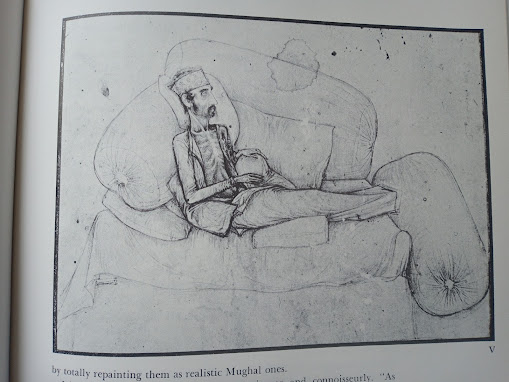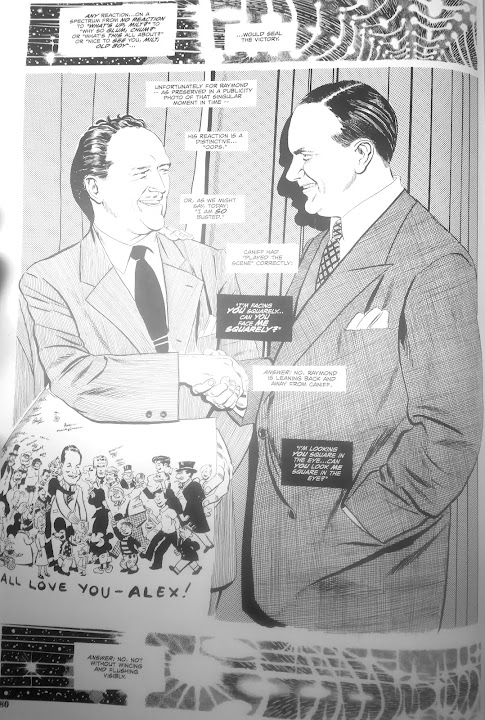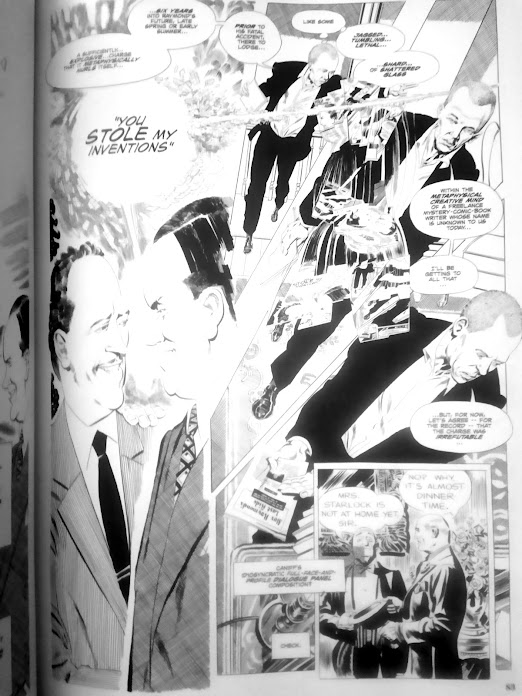The Amber-Court wars, though they surges back and
forth for many years, had no such civilisational colophon, leading directly to
the Fall of the Amber Court and the full consumption of the world into the Red
Shift, from which we were ultimately lead (Praise be to God), by the Sleeping
King. Therefore few coherent histories appear. In addition to this, the closer
on approaches the Red Shift and its ancidents, the greater the danger of Vermin
Tales and other cognitive and causal dangers increases. We must be careful with
our sources!
Even so, the simple lack of time and stability, and the growing ontological collapse, are but little explanation for the shift in the tone and substance of our sources as the Amber Court Wars wove on. Instead, as I shall argue and you shall see below, the mind-set of the cultures involved was subtly shifting away from the previous conceptions of secular collective truth and towards a growing, though still nascent, conception of revealed divine truth.)
"Many are the Martyrs and Many the deaths, few honourable, all true. Yet bless their memories, the seers orb robs men of honour but even those who die in shame may show the way and leave the sign by which truth shall be seen, so praise the dishonoured dead and learn their lessons well...
Many are the Martyrs to the Glass Maze, dying not in honour, but in shame. How can it be? Men will ask in later times, that such were accounted martyrs at all? For those who served gods in lost ages died all in defiance, whether through war or torture, imprisonment or distain, though they fell in subjection and were pressed into the mire, these martyrs, those we would call as such, died all in clear decision, their deaths their own. All were offered mercy for conversion, all refused, so their deaths, like their lives, were the product of their own souls. Such has it been in latter times and such has it been for those we might call 'martyrs to the cause', whether the cause itself be good or no, for us or against.
Yet, many will claim, how be it that these 'Martyrs to the Glass Maze' should be called so? For many died not by their own clear choice at all, nor died well, not in defiance, nor subjection, but in great confusion and despair, either by their own hand or by the hand of others. These, men will say, were no martyrs deaths.
This we must explain and speak well, for here is the mark and the telling of the nature of our wars for never before in Time has man faced such a foe, not of any state or sultan, or worker of deeds for in those past times no enemy of any kind could take from the soul of man that final thing - to choose to die.
Whatever the foe or the battle, even in the deepest dejection and without resource, still men’s lives have been their own. For those for whom no muscular force or working of will may serve, even so, no matter the catastrophe, mortal hearts may choose to go down into dusty death, defiant to the last, contemptuous of their enemies, perhaps hoping to light by such sacrifice the spark of defiance in others, or to at least leave a mark in histories page, or even simply that they may pass from this world knowing, if only within their own minds, that they were thereby true unto the last to their people, their creed, king or faith.
It is this very theft which marks the martyrs to the glass maze, the corruption of the Seers eye, that more-than demoniacal power which fumed forth from Frost more than a decade after the closing of the wars of Horse and Water, of the insidious conspiracy of the Amber Court and its terrible victories over a world and a people made weak by victories of their own, the sickening rebirth of the taint of Albraneth, now cancerously grown and armed, like a teratoma of the human soul, with teeth and nails.
Many were the shames of the Amber Court Wars in their first years, near-total the losses, awful the tales and great the madness.
For that purpose we here set forth as full an accounting as can be made, (times and sources notwithstanding), of the great and shameful manipulations of the Amber Court and its Twice-Cursed King. Few heroes shall you find amongst them but tales of shame and madness, fear and delusion, oof great lives spent like piss against a wall, their thoughts and efforts trickling to nothing of all human hope and heroism made null and nothing for those trapped within the glass maze of the Seers dreams.
Here you shall hear in full of the Harrowing of Trulzch, how the great force and strong army of Corbin Trulzch which set forth to strangle the Amber Viper at its first striking, was lead astry, harrowed, lead through storm and wave, subject to suicide and madness and finally induced to besiege the city of Mir, within which were found only plague corpses which infected first the remaining forces of Trulzch, and then upon their sad retreat, the native populations of their lands.
Here the lay of Trevelyan who was frozen into madness by Amber trickery, facing first this way then that, besieging, re-enforcing, manoeuvring, escaping, all to nothing till, driven past madness he finally attacked through the Salt flats of Zeltbahn and was drowned in the terrible wave of that year.
Here you will hear of sorrow, madness and a loss of hope, for this is the fruit of the seer, this is the benison of the Amber Court, the gift of the Damned, that they should take not only lives but souls, strip man even of his bones of self, leaving not even ghosts.
Aye there are few true heroes in these tales, but warnings and dark truths, though there are rays of black hope, as if shining from a darkened sun.
You may read here the tale of Corbin Mir, how he executed his deluded staff, blinded himself by staring into the sun and committed himself to the attritional horror of the Holger Pass, inflicting upon the Amberites at that time losses greater than they feared, and the legend of Colonel Penrose, the first of the Iron Path to experiment with alterations on his own mind, of his great sacrifice, by pin and vice, saw and needle, of his memory of each day and thusly of his sense of self, a man lead by fury and righteousness alone, who feared no manipulation for he could not comprehend it, and therefore by its chains could be but little bound.
We who have walked from the Harrowing and learnt is lessons. We are the Riders of Truth. We are the Heroes of Man and of Pure Causality. We are the children of the Iron Path and no matter the cost, no matter the suffering or ages spent, ultimately and eventually, we shall win and wipe the foulness of the Amber Court from the face and memory of the world. Will shall give mankind back its soul, and in pursuit of that, no suffering is too much.
Read then of the Martyrs of the Glass Maze, and learn there the horror of your Foe."
Transcript of the Introduction to a copy of "Martyrs of the Glass Maze", Pathist text of the mid-to-Late Amber Court Wars, recovered as antiquary treasure in the Ninth Crusade against Suleman lord of the Haeretici Ferrea. Full contents damaged and partially redacted due to potential CurseThought as prognosticated by Truly-Bound Daemons of the Eleventh Pussiance sealed as such by the Holy Inquisition may all who break this seal fall beneath the Eye of the Black Sun, amen.




























